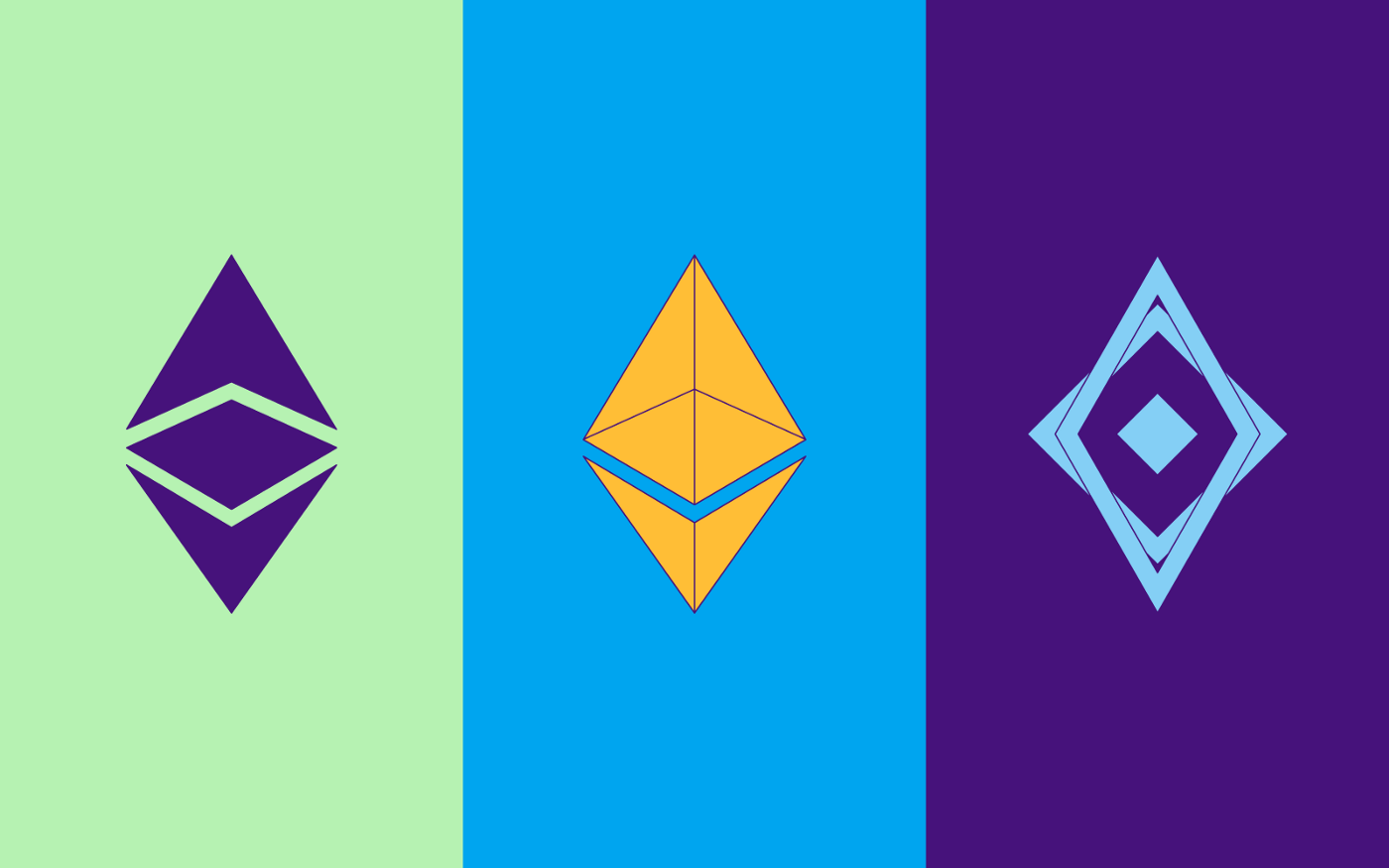Miners want to fork Ethereum post-merge and continue running the PoW chain. Everyone else thinks it’s a bad idea.
At the turn of the 19th century, textile workers across England were pissed off. They had spent years learning the craft of weaving and had invested heavily in their workshops only for their livelihoods to be threatened by a new invention — machines. The advent of textile machinery meant that large factories could produce a far higher volume of textile goods with a fraction of the manpower and sell the products at lower costs as well.
Enraged that they were being replaced by this new technology, a large number of textile workers and workshop owners organized into a radical group called The Luddites, which participated in protests and destroyed textile machinery. Since then, the term Luddite is used to refer to someone who is opposed to industrialization, automation or just new technologies in general. And today, it’s the Luddites of Ethereum that are radicalizing.

Miners have invested a significant amount of capital over the years to build the high-spec infrastructure needed for mining ETH, from machines in garages to industrial-scale mining farms in converted warehouses. For their investment and effort, they are rewarded in newly minted tokens, amounting to a lucrative ~13,500 ETH/day (to be split between all miners).
A proof of work blockchain runs on the backs of miners. And these miners need expensive computing equipment to solve cryptographic puzzles in order to add new blocks to the chain. For their effort and investment, they are rewarded in newly minted tokens, the value of which amounts to around 13,500 ETH per day (to be split between all miners). It’s a good gig.
But now that the Merge 🐼 is almost upon us and Ethereum is inching ever closer to becoming a proof of stake blockchain, these miners have realized that their well is about to run dry. Journalist Colin Wu estimates that around $5 billion worth of GPU and ASIC-based hardware will be rendered obsolete by the merge.
This is a huge problem for these keepers of consensus, especially those who went into debt to finance their power-hungry mining facilities. And now that they can’t rely on mining rewards to cover their costs, they are railing against essential progress. Instead of finding another well, they have decided that the best course of action is to dig deeper and leech every drop of water they can from the ground. How do they plan to achieve this? Easy…
Secede from Ethereum and keep running the PoW chain after the merge.

Deja Vu for Ethereum
This is not the first time that the Ethereum community has been divided over the direction in which the network ought to proceed. In 2016, the infamous DAO hack resulted in $60 million worth of ETH being stolen. Since there was no way to get the money back, Ethereum’s head honchos decided to fork the chain and revert it to its pre-hack state.
This decision incited a massive argument within the community, which was split into two factions — those who those though that the theft was legal since the code allowed for it, and those who wanted to get the money back.
Vitalik Buterin, along with the majority of miners and users, belonged to the second camp and gladly moved onto the forked Ethereum chain while everyone else remained on the old chain, subsequently named Ethereum Classic.

Among the people who remained was a miner named Chandler Guo. While he was initially supportive of the first Ethereum hard fork, like most miners were, Guo later changed his stance and moved to Ethereum Classic — which he admits was a bad decision with hindsight. Fast forward to today though, and Guo is among the strongest proponents of forking Ethereum yet again to keep the PoW chain running.
His stance is easy enough to understand: he wants to help miners. As a former miner himself, Guo can appreciate just how severely Ethereum’s transition to PoS will affect those who make their living from mining blocks on the chain.
Many of them have invested heavily to set up their infrastructure and will likely face bankruptcy once they stop receiving miner rewards. It is to preserve the livelihoods of these miners that Guo is pushing for the ETH PoW fork, which he admits is not going to be easy and has a “90% chance” of success. This is an unfortunate situation for sure, but is there really an alternative to moving ahead?

ETH PoS and the march of progress
Progress of any kind inevitably has a negative effect on someone. Clocks killed off hourglass manufacturers, cars made horse carriage drivers redundant, and electric streetlights put lamplighters out of a job. But the new inventions were absolutely necessary, just as how Ethereum’s transition to proof of stake is vital in the long run.
“The needs of the many outweigh the needs of the few”
The downside of switching from PoW to PoS is only that miners will be defunct, but the upsides are numerous. A proof of stake Ethereum will consume roughly 99.95% less energy than its PoW alternative, which is essential in the face of the global energy crisis we’re facing today.
Furthermore, since validators don’t perform computationally-intensive work like miners, they receive significantly less ETH as block rewards. Based on the current amount of total ETH staked, validator rewards on the PoS Beacon chain amount to ~1600 ETH/day (more than 8x less than miner rewards). This reduced issuance will play a vital role in ETH’s bid to become a deflationary currency.

The benefits of a PoS Ethereum then are evident. Which is why everyone from the network’s core devs to the Ethereum maxis are so bearish about a possible ETH PoW fork. Because honestly, why would it be worth anything? Ethereum Classic has been around for a long time, but its value is paltry compared to Ethereum. Why? Because no one’s using it!
A blockchain network derives its value from usage, and no one wants to use a risky, unreliable alternative which provides nowhere near the same level of utility. The biggest dApps, NFT marketplaces and DeFi protocols run on ETH, not ETC. Ethereum Classic users don’t have access to the likes of Uniswap and Curve, nor can they bridge assets to other blockchain networks like Ethereum users can. So users and developers clearly don’t have anything to gain from an ETH PoW fork, which brings us back to the separatists: the miners.
Stop with the pointless forking!
Ethereum’s plan to switch to PoS is not new. The core devs have been working on this transition throughout the network’s history, and while the Merge has been repeatedly delayed, it was always only a question of ‘if’ and not ‘when’.
And now that the date, or rather terminal total difficulty, has finally been fixed, miners are up in arms about their loss of revenue. Did they not realize that this situation would eventually come to pass? They had more than enough time to prepare for Ethereum’s future as a PoS chain. They could have scaled back their operation, traded their mining hardware for significantly cheaper machinery and staked the difference in ETH to become validators. Instead, they have launched a regressive agenda to keep the PoW Ethereum running so that they can either break even or keep profiting from mining rewards.

It remains unclear whether they will be satisfied with just one PoW fork. What if the miners who want to secede can’t reach a consensus amongst themselves? Will they fork more Ethereum chains to satisfy their respective agendas? Who knows and honestly, who cares? Ethereum Classic showed us that a blockchain derives its value from its users.
For an ETH PoW chain with a small user base, the gas burned will not offset the issuance of ETHW, leading it to become a deflationary currency. The miners on this network will be rewarded in ETHW, but those tokens are very likely going to be worthless. So best of luck to them if this is their plan to recoup their investment.
Also, keep in mind that forking Ethereum now is going to be a lot harder than the forking of Ethereum Classic, considering how large the Ethereum state is today than it was in 2016. This entire exercise may fail before it even starts, and there’s little time to get it right because the fork would have to take place before the Merge, which is only a week away.
It’s not only miners who are in favour of this fork by the way. There are also some, like Tron’s controversial founder Justin Sun, who are supporters for other reasons, monetary ones of course. Sun, who has butted heads with Ethereum for several years, has even listed an ETHW token on Tron’s crypto exchange Poloniex. Following this move, other exchanges like Binance, MEXC Global, Gate.io, and FTX have said that they will support an Ethereum PoW fork and credit user accounts with ETHW tokens at a 1:1 ratio with ETH. But they don’t really have anything to lose if the fork doesn’t take place, unlike the miners. They are not supporting this division to recoup an investment, but rather to profit from what is sure to be a chaotic environment.
Wait, so ETH holders get free ETHW?
Yes.
Binance and other exchanges are planning to airdrop ETHW tokens to ETH holders at a 1:1 ratio. Note that you have to be holding ETH on the mainnet to be eligible for this drop (staked ETH and ETH held in DeFi protocols or Layer 2s will not be eligible). So my (non)advice is this: Put all your ETH on one of these exchanges, get new ETHW tokens, dump them before their price crashes, buy more (real) ETH with the money… profit!
I personally don’t see ETH PoW working out for the same reason that Ethereum Classic is languishing today. So I’m not going to use the forked chain even if it does remain in existence. But I’m certainly not going to ignore the chance to make some free money, and buy some more real ETH with it.